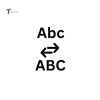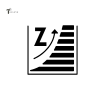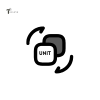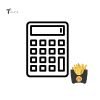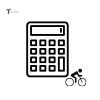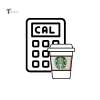Number Base Converter
Convert between binary, hexadecimal, decimal, and octal number systems
RELATED TOOLS The Ultimate Guide to Number Base Conversion: Master Binary, Decimal, Hex, and Octal
In today’s digital world, understanding number systems is essential for programmers, computer scientists, and technology enthusiasts alike. Whether you’re learning to code, working with computer architecture, or simply curious about how computers process information, having a reliable number base converter at your disposal is invaluable. This comprehensive guide will explore everything you need to know about number base conversion, with a special focus on Toolifyr’s powerful and user-friendly solution.
What is Number Base Conversion?
Number base conversion refers to the process of translating numbers between different numeral systems. While humans typically use the decimal system (base-10), computers operate using binary (base-2), and programmers often work with hexadecimal (base-16) and octal (base-8) systems. Converting between these systems is fundamental to understanding how computers process and store information.
The most common numeral systems include:
Binary (Base-2): Uses only two digits – 0 and 1
Decimal (Base-10): Uses ten digits – 0 through 9 (our everyday system)
Hexadecimal (Base-16): Uses sixteen digits – 0-9 and A-F
Octal (Base-8): Uses eight digits – 0 through 7
Why Use a Number Base Converter?
Manual conversion between number systems can be time-consuming and prone to errors, especially with larger numbers. A dedicated number base converter like Toolifyr’s solution offers several advantages:
Accuracy: Eliminates human calculation errors
Speed: Instant conversions save valuable time
Educational value: Helps understand the relationships between number systems
Convenience: Accessible from any device with internet connection
Multiple conversions: Convert between all major bases simultaneously
How to Use Toolifyr’s Number Base Converter
Toolifyr offers one of the most intuitive and efficient number base converter tools available online. Here’s how to make the most of it:
Visit Toolifyr’s Number Base Converter: Navigate to our dedicated conversion tool
Enter Your Number: Input the value you want to convert in the provided field
Select Input Base: Choose the numeral system of your input number
View Results: Instantly see conversions to all other bases
Copy Results: Use the copy buttons to easily transfer results for your projects
The entire process takes just seconds, making Toolifyr one of the fastest solutions available for number base conversion needs.
OUR TOP RELATED Understanding Different Number Systems
The Binary System (Base-2)
Binary is the fundamental language of computers. Each digit in a binary number is called a bit, and represents a power of 2. Understanding binary is essential for:
-
Computer programming
-
Digital electronics
-
Data storage and representation
-
Network addressing
The Decimal System (Base-10)
Decimal is the number system most familiar to us, using ten digits (0-9). Each position in a decimal number represents a power of 10. Despite being human-centric, decimal conversion is crucial for:
-
Interpreting computer calculations for human consumption
-
Financial applications
-
Scientific calculations
-
Everyday mathematics
The Hexadecimal System (Base-16)
Hexadecimal extends beyond our familiar decimal digits by incorporating letters A-F to represent values 10-15. This system is particularly valuable for:
-
Representing binary data in a more compact form
-
Memory addressing in computer systems
-
Color codes in web design
-
Assembly language programming
The Octal System (Base-8)
Though less common today, octal remains relevant in certain computing contexts:
-
Unix file permission systems
-
Some programming languages
-
Historical computer systems
-
Digital displays
Conversion Techniques Explained
How to Convert a Decimal to Binary
Converting from decimal to binary is a fundamental skill in computer science. Here’s the process:
-
Divide by 2: Repeatedly divide the decimal number by 2
-
Record remainders: Keep track of the remainder after each division (either 0 or 1)
-
Reverse order: The binary equivalent is the remainders read from bottom to top
-
Practice with examples: Start with small numbers to understand the pattern
For example, converting decimal 10 to binary:
-
10 ÷ 2 = 5 with remainder 0
-
5 ÷ 2 = 2 with remainder 1
-
2 ÷ 2 = 1 with remainder 0
-
1 ÷ 2 = 0 with remainder 1
-
Reading remainders from bottom to top: 1010
How to Decimal to Binary Conversion
The process of decimal to binary conversion can be streamlined with practice:
-
Understand place values: Binary places represent powers of 2 (1, 2, 4, 8, 16, etc.)
-
Subtraction method: Subtract the largest power of 2 possible and mark 1, else mark 0
-
Use Toolifyr’s converter: Verify your manual conversions with our tool
-
Learn patterns: Recognize common decimal-binary equivalents for efficiency
How to Convert Hexadecimal to Binary
Converting hexadecimal to binary is surprisingly straightforward:
-
Convert digit by digit: Each hexadecimal digit corresponds to exactly four binary digits (bits)
-
Use reference chart: Memorize or keep handy the hex-to-binary equivalents
-
Combine results: String together the binary equivalents of each hex digit
-
Remove leading zeros: Clean up the result by removing unnecessary leading zeros
For example, hexadecimal F3 becomes:
-
F (decimal 15) = 1111 in binary
-
3 = 0011 in binary
-
Combined: 11110011
Hexadecimal to Binary Chart
While Toolifyr’s converter handles these transformations instantly, understanding the relationships can be valuable:
-
0 (hex) = 0000 (binary)
-
1 (hex) = 0001 (binary)
-
2 (hex) = 0010 (binary)
-
3 (hex) = 0011 (binary)
-
4 (hex) = 0100 (binary)
-
5 (hex) = 0101 (binary)
-
6 (hex) = 0110 (binary)
-
7 (hex) = 0111 (binary)
-
8 (hex) = 1000 (binary)
-
9 (hex) = 1001 (binary)
-
A (hex) = 1010 (binary)
-
B (hex) = 1011 (binary)
-
C (hex) = 1100 (binary)
-
D (hex) = 1101 (binary)
-
E (hex) = 1110 (binary)
-
F (hex) = 1111 (binary)
Hexadecimal to Decimal Chart
Similarly, understanding hex-to-decimal relationships can be helpful:
-
0 (hex) = 0 (decimal)
-
1 (hex) = 1 (decimal)
-
2 (hex) = 2 (decimal)
-
3 (hex) = 3 (decimal)
-
4 (hex) = 4 (decimal)
-
5 (hex) = 5 (decimal)
-
6 (hex) = 6 (decimal)
-
7 (hex) = 7 (decimal)
-
8 (hex) = 8 (decimal)
-
9 (hex) = 9 (decimal)
-
A (hex) = 10 (decimal)
-
B (hex) = 11 (decimal)
-
C (hex) = 12 (decimal)
-
D (hex) = 13 (decimal)
-
E (hex) = 14 (decimal)
-
F (hex) = 15 (decimal)
How to Convert Decimal to Octal
Converting decimal to octal follows a similar process to decimal-to-binary conversion:
-
Divide by 8: Repeatedly divide the decimal number by 8
-
Record remainders: Keep track of the remainder after each division (0-7)
-
Reverse order: The octal equivalent is the remainders read from bottom to top
-
Verify with Toolifyr: Use our converter to check your results
For example, converting decimal 100 to octal:
-
100 ÷ 8 = 12 with remainder 4
-
12 ÷ 8 = 1 with remainder 4
-
1 ÷ 8 = 0 with remainder 1
-
Reading remainders from bottom to top: 144
Practical Applications of Number Base Conversion
Computer Programming
Number base conversion is essential in various programming scenarios:
-
Memory addressing: Hexadecimal is commonly used for memory addresses
-
Bitwise operations: Understanding binary is crucial for bit manipulation
-
Color representation: Web colors are often represented in hexadecimal
-
File permissions: Unix systems use octal for file permission codes
Digital Electronics
In electronics and hardware design:
-
Circuit design: Binary represents on/off states in digital circuits
-
Microcontroller programming: Often requires hexadecimal notation
-
Signal processing: Understanding different number bases aids in data interpretation
Education and Learning
For students and educators:
-
Computer science courses: Number systems are fundamental curriculum
-
Mathematics education: Exploring different bases enhances numerical understanding
-
Exam preparation: Quick conversion tools help verify manual calculations
Data Analysis and Cybersecurity
Professionals in technical fields benefit from number base knowledge:
-
Data representation: Different bases offer compact ways to represent information
-
Encryption algorithms: Many cryptographic methods involve base conversions
-
Network analysis: IP addresses and other network information use different bases
Why Choose Toolifyr’s Number Base Converter?
While manual conversion methods are valuable for learning, Toolifyr’s number base converter offers distinct advantages:
Instant Results
Our tool provides immediate conversions across all major number systems, saving time and reducing errors associated with manual calculations.
User-Friendly Interface
With a clean, intuitive design, Toolifyr’s converter is accessible to users of all skill levels, from students to seasoned professionals.
Educational Value
While providing instant conversions, our tool also helps users understand the relationships between different number systems through visual representation.
No Installation Required
As a web-based tool, Toolifyr’s number base converter requires no downloads or installations, making it accessible from any device with internet connectivity.
Completely Free
We believe in providing valuable tools without barriers. Our number base converter is completely free to use, with no hidden fees or premium features.
Tips for Effective Number Base Conversion
Start with Common Values
Familiarize yourself with frequently encountered conversions:
-
Powers of 2 in binary, decimal, and hexadecimal
-
Common color codes in hexadecimal
-
Standard memory address ranges
Use Toolifyr for Verification
Even when practicing manual conversions, use our number base converter to verify your results and build confidence in your skills.
Understand the Concepts
While conversion tools are convenient, understanding the underlying principles will make you a better programmer or technician.
Practice Regularly
Like any skill, number base conversion becomes easier with practice. Use Toolifyr’s converter to check your work as you learn.
Advanced Conversion Techniques
Converting Between Non-Standard Bases
While most work involves the common bases (2, 8, 10, 16), our converter can handle any base from 2 to 36, supporting more specialized applications.
Fractional Number Conversion
Some converters struggle with fractional values, but Toolifyr’s tool accurately handles conversions of numbers with decimal points across different bases.
Negative Number Representation
Understanding how negative numbers are represented in different systems (two’s complement in binary, for example) is crucial for advanced computer science topics.
The Future of Number Base Conversion
As technology evolves, so do the applications of number base conversion:
-
Quantum computing: May introduce new number representation systems
-
Advanced cryptography: Continues to rely on sophisticated number theory
-
Artificial intelligence: Often requires efficient data representation methods
-
Internet of Things: Devices with limited resources benefit from compact data formats
Conclusion
Number base conversion is a fundamental skill in our digital world, with applications spanning computer programming, electronics, education, and beyond. While understanding the theory behind these conversions is valuable, having a reliable tool like Toolifyr’s number base converter ensures accuracy and saves time for professionals and learners alike.
Whether you need to convert decimal to binary for a programming assignment, translate hexadecimal color codes for a web design project, or understand octal file permissions on a Unix system, Toolifyr provides an efficient, user-friendly solution that delivers instant results across all major number systems.
By combining the power of our conversion tool with the knowledge gained from this guide, you’ll be well-equipped to handle any number base conversion task with confidence and precision. Visit Toolifyr’s Number Base Converter today and experience the simplicity of seamless conversion between binary, decimal, hexadecimal, and octal systems.

